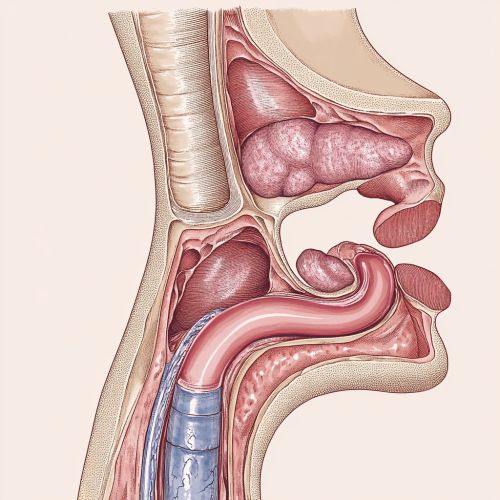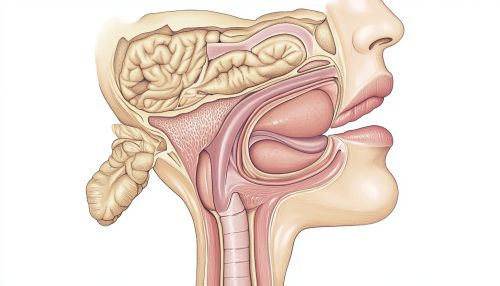Vocal Resonance: Difference between revisions
No edit summary |
No edit summary |
||
| Line 3: | Line 3: | ||
Vocal resonance refers to the amplification and enrichment of the sound produced by the vocal cords as it passes through the various cavities of the body, including the throat, mouth, and nasal passages. This phenomenon plays a crucial role in the quality, timbre, and projection of the human voice. Understanding vocal resonance is essential for professionals in fields such as singing, acting, speech therapy, and linguistics. | Vocal resonance refers to the amplification and enrichment of the sound produced by the vocal cords as it passes through the various cavities of the body, including the throat, mouth, and nasal passages. This phenomenon plays a crucial role in the quality, timbre, and projection of the human voice. Understanding vocal resonance is essential for professionals in fields such as singing, acting, speech therapy, and linguistics. | ||
[[Image:Detail-98011.jpg|thumb|center|An illustration of the human vocal tract showing the throat, mouth, and nasal passages.]] | [[Image:Detail-98011.jpg|thumb|center|An illustration of the human vocal tract showing the throat, mouth, and nasal passages.|class=only_on_mobile]] | ||
[[Image:Detail-98012.jpg|thumb|center|An illustration of the human vocal tract showing the throat, mouth, and nasal passages.|class=only_on_desktop]] | |||
=== Anatomy and Physiology of Vocal Resonance === | === Anatomy and Physiology of Vocal Resonance === | ||
Latest revision as of 08:24, 19 September 2024
Vocal Resonance
Vocal resonance refers to the amplification and enrichment of the sound produced by the vocal cords as it passes through the various cavities of the body, including the throat, mouth, and nasal passages. This phenomenon plays a crucial role in the quality, timbre, and projection of the human voice. Understanding vocal resonance is essential for professionals in fields such as singing, acting, speech therapy, and linguistics.


Anatomy and Physiology of Vocal Resonance
The human vocal tract is a complex system that includes several anatomical structures contributing to vocal resonance. These structures can be broadly categorized into the following:
Vocal Folds
The vocal folds, also known as vocal cords, are located within the larynx (voice box). They are responsible for the initial sound production through their vibration. The frequency and intensity of these vibrations are influenced by the tension and mass of the vocal folds, which can be adjusted by various laryngeal muscles.
Pharynx
The pharynx is a muscular tube that extends from the nasal cavity to the esophagus and larynx. It is divided into three sections: the nasopharynx, oropharynx, and laryngopharynx. Each section plays a role in modifying the sound waves produced by the vocal folds, contributing to the overall resonance.
Oral Cavity
The oral cavity includes the mouth, tongue, teeth, and hard and soft palates. The shape and size of the oral cavity can be altered by movements of the tongue and jaw, which in turn affect the resonance characteristics of the voice.
Nasal Cavity
The nasal cavity is involved in nasal resonance, which adds a distinct quality to the voice. The degree of nasal resonance can be controlled by the velum (soft palate), which can either open or close the passage between the nasal cavity and the pharynx.
Types of Vocal Resonance
Vocal resonance can be classified into several types based on the primary resonating cavities involved:
Chest Resonance
Chest resonance involves the amplification of sound in the chest cavity. It is often associated with a rich, warm, and deep vocal quality. This type of resonance is particularly important for lower-pitched sounds and is commonly utilized in classical singing and speech.
Head Resonance
Head resonance occurs when sound waves are amplified in the nasal and sinus cavities. It is characterized by a bright, clear, and ringing quality. Head resonance is essential for higher-pitched sounds and is frequently used in operatic singing and certain speech techniques.
Nasal Resonance
Nasal resonance is produced when sound waves resonate primarily in the nasal cavity. While excessive nasal resonance can result in a nasal-sounding voice, a controlled amount can add brightness and clarity to the voice. This type of resonance is often employed in various singing styles and speech patterns.
Oral Resonance
Oral resonance involves the amplification of sound in the oral cavity. It is crucial for the articulation and clarity of speech sounds. The shape and size of the oral cavity, influenced by the position of the tongue, lips, and jaw, play a significant role in determining the quality of oral resonance.
Factors Affecting Vocal Resonance
Several factors can influence vocal resonance, including anatomical, physiological, and environmental elements:
Anatomical Factors
The size and shape of the vocal tract, including the length of the vocal folds, the dimensions of the pharynx, and the configuration of the oral and nasal cavities, can significantly impact vocal resonance. These anatomical features are largely determined by genetics but can also be influenced by factors such as age and gender.
Physiological Factors
The tension and mass of the vocal folds, the positioning of the larynx, and the coordination of the respiratory muscles all play a role in vocal resonance. Proper breath support and control are essential for optimizing resonance and achieving a balanced and resonant voice.
Environmental Factors
The acoustics of the surrounding environment, including the presence of reflective surfaces and ambient noise, can affect the perception of vocal resonance. Singers and speakers often adjust their vocal techniques to accommodate different acoustic settings.
Techniques for Enhancing Vocal Resonance
Various techniques can be employed to enhance vocal resonance, particularly in the fields of singing and speech therapy:
Breath Control
Effective breath control is fundamental for achieving optimal vocal resonance. Techniques such as diaphragmatic breathing and controlled exhalation help maintain consistent airflow and support the vocal folds' vibration.
Vocal Warm-Ups
Vocal warm-ups, including exercises that focus on pitch, volume, and resonance, prepare the vocal folds and resonating cavities for optimal performance. These exercises often involve humming, lip trills, and vowel modifications.
Resonance Exercises
Specific exercises targeting different resonating cavities can help improve vocal resonance. For example, humming with the lips closed can enhance nasal resonance, while open-mouth exercises can focus on oral resonance.
Posture and Alignment
Proper posture and alignment of the body are crucial for optimal vocal resonance. Maintaining an upright posture with relaxed shoulders and an aligned spine allows for efficient airflow and resonance.
Applications of Vocal Resonance
Vocal resonance has numerous applications across various fields:
Singing
In singing, vocal resonance is essential for achieving a rich, full, and expressive voice. Singers often train extensively to develop their resonance, focusing on techniques that enhance chest, head, and nasal resonance.
Acting
Actors use vocal resonance to project their voice and convey emotions effectively. Mastery of resonance techniques allows actors to adapt their voice to different characters and settings.
Speech Therapy
Speech therapists work with individuals to improve their vocal resonance, particularly those with voice disorders or speech impediments. Techniques such as resonance therapy and vocal exercises are employed to achieve a balanced and resonant voice.
Linguistics
In linguistics, the study of vocal resonance contributes to the understanding of phonetics and phonology. Researchers analyze how different resonating cavities affect the production and perception of speech sounds.
